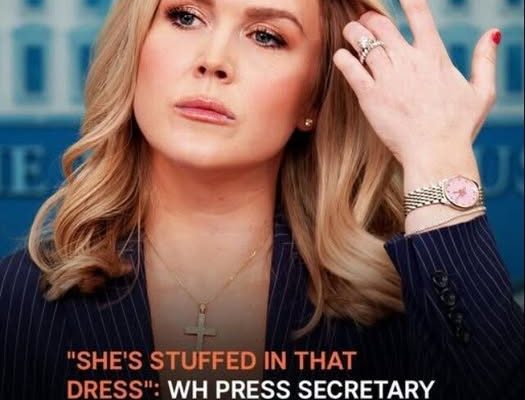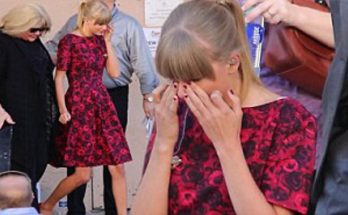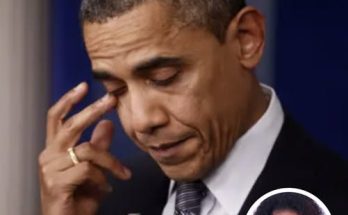White House Press Secretary Karoline Leavitt became an unexpected focal point of online discussion on March 31, 2025—not because of any policy announcement or political statement, but because of what she wore. During a scheduled public press briefing held on the North Lawn of the White House, her outfit became the centerpiece of a flurry of commentary, sparking a wave of opinions that quickly spread across news outlets, blogs, and social media platforms.
Leavitt, who has often been noted for her youthful, modern approach to the traditionally formal role of Press Secretary, appeared at the event wearing an ankle-length green dress with a bold knee-high slit. The dress’s striking hue and daring cut contrasted sharply with the formality of the setting, where dark suits and restrained silhouettes tend to dominate. She paired the dress with brown heels, a choice that further drew attention to the ensemble’s distinctive styling.
While fashion has long been intertwined with political image-making, Leavitt’s look immediately set off debates about taste, appropriateness, and public perception. Within minutes of her appearance, photographs and video clips began circulating online. The reactions came swiftly—most of them critical. Critics took aim at both the fit and the style of the dress, with comments ranging from subtle disapproval to outright mockery.
One particularly blunt remark read, “She’s stuffed in that dress,” suggesting it was too tight and therefore unflattering. Another commenter questioned the outfit’s overall execution, writing, “I think your dress is on backward?”—a jab that implied a lack of polish or attention to detail in her presentation. Others simply stated, “The dress doesn’t fit her,” zeroing in on tailoring rather than color or design.
Much of the criticism focused on the perceived clash between the dress’s high-slit, form-fitting silhouette and the professional environment of the White House. Some observers argued that the outfit undercut the gravitas of her position, while others claimed it was an unnecessary distraction from the serious nature of her work. The tone of the discourse echoed familiar patterns: women in politics often find their appearance judged with far greater intensity and far less generosity than their male counterparts, whose attire is rarely dissected with the same vigor.
Supporters of Leavitt, though less vocal in the online conversation, argued that the criticism was an overreaction and rooted in outdated expectations of how women in leadership roles should dress. They noted that male political figures can wear the same style of suit for years without comment, while women are often scrutinized for every color, cut, and accessory they choose. For them, the uproar over a dress slit reflected more about societal double standards than about Leavitt’s actual performance or competence in her role.
In the end, what began as a routine press briefing evolved into a full-fledged fashion controversy. The episode highlighted how public attention can shift in an instant from substance to style, and how female public figures—especially in politics—often navigate a minefield of expectations that extend far beyond their job descriptions. Whether seen as a harmless fashion misstep or a symbol of the ongoing double standard, Leavitt’s green dress became a talking point that underscored the persistent tension between personal expression and public perception in the political arena.



